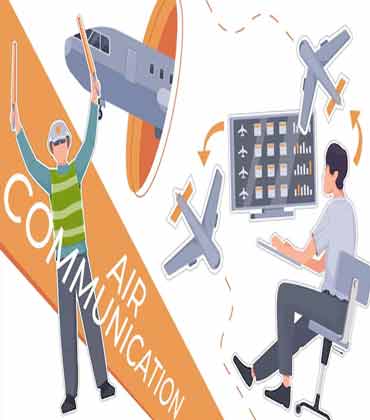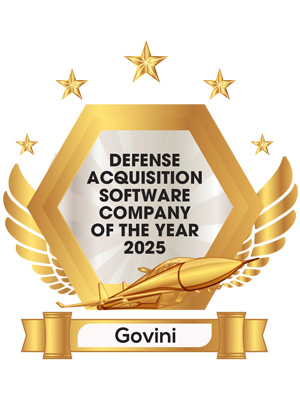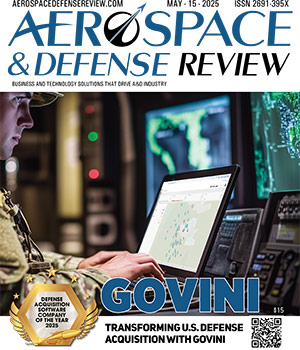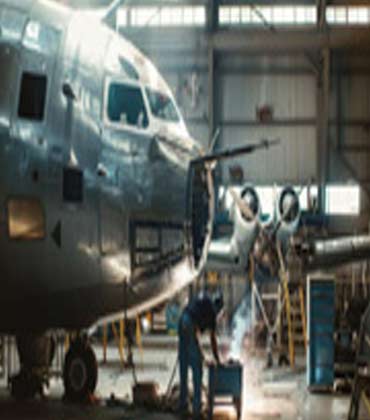THANK YOU FOR SUBSCRIBING
The Problem with US Defense Acquisition The U.S. military is the most powerful defense force in the world. Yet behind this superiority lies an acquisition system that demands transformation. The systems used to manage defense acquisition have remained frustratingly archaic while the battlefield has evolved. At a time when China and other adversaries are rapidly developing next-generation fighter jets, hypersonic missiles, and AI-driven warfare capabilities, the U.S. Department of Defense (DoD) continues to struggle with slow innovation cycles and disconnected systems that compromise operational readiness. Defense acquisition is defined as the full end-to-end process that takes a military capability from early research and development through production and long term sustainment, along with the supply chains that make that entire process possible. Solving the Defense Acquisition Problem with Software At the forefront of solving these challenges is Govini, the defense technology company that redefines how the DoD approaches acquisition, logistics, and sustainment. Govini stands apart as the leading defense acquisition software company in the U.S., providing AI-powered technology that streamlines decision-making across the entire acquisition lifecycle. “By integrating best-in-class government and commercial data with cutting-edge workflows, our software transforms the outdated defense acquisition processes that have stood in the way of military readiness and operational outcomes,” says CEO Tara Murphy Dougherty. The defense acquisition process is notoriously cumbersome, relying on countless systems, siloed data, and manual processes. As adversaries rapidly field next-generation technologies, these sluggish approaches leave the U.S. military struggling to keep pace with evolving threats. At Govini’s most recent Defense Software and Data Summit, CEO Tara Murphy Dougherty did not mince words about the severity of this issue. With conflicts in Ukraine, the Middle East, and increasing aggression from China, Murphy Dougherty laid out critical areas where the DoD must act quickly to prepare for future conflicts, including: • Connecting the supply chain with the kill chain – Integrating logistics and warfighting systems is essential for sustained military operations. • Banning spreadsheet management of weapons systems and platforms – Readiness cannot be managed with outdated tools that fail to provide real-time insights. These are the exact issues that Govini solves. The company’s flagship platform, Ark, delivers AI-enabled applications built atop critical commercial and government data, enabling faster and more informed decision-making across the defense acquisition lifecycle.
Top Aircraft on Ground Services 2025
Maintenance, Repair, and Overhaul (MRO) providers play a critical role in aviation by ensuring that aircraft remain operational and safe. These services, which include cabin retrofits, fuel efficiency upgrades, and system installations, enhance both comfort and performance. However, the core focus remains on safety—particularly for aging aircraft, which require specialized attention to maintain reliability and performance over time. LAS MRO is dedicated to prioritizing safety through rigorous processes, strict adherence to industry standards, and a forward-thinking approach to innovation. With over 15 years of experience in the MRO field, the company has become a trusted partner for clients by delivering exceptional service, reliability, and expertise. Commitment to Safety and On-Time Delivery “At LAS MRO, we understand that our clients’ aircraft are not just machines—they are valuable assets,” says Breno Lemos, managing partner. “Our mission is to keep them flying safely, especially older models that often require more than routine maintenance.” The company focuses on addressing safety issues while ensuring that costs remain reasonable and downtime is minimized. LAS MRO primarily serves private aircraft owners (Part 91), commercial operators (Part 135), and larger fleet operators (Part 121). Its services include routine inspections, avionics upgrades, and emergency Aircraft on Ground (AOG) support. While all services are important, LAS MRO’s AOG response stands out. A key challenge for most clients is the unpredictability of how long their aircraft will remain out of service. To address this, LAS MRO maintains clear communication and provides accurate estimates, ensuring that clients are never surprised by delays. The company works hard to meet time commitments and minimize aircraft downtime.
Top Aviation Aftermarket Service 2025
Keeping aircraft operational and minimizing downtime is critical in the aviation industry. That’s why timely AOG services, strategic inventory management, and efficient repairs are essential to ensuring seamless operations. For over three decades, OH Capital Assets (OHC) has been a trusted provider in the aviation aftermarket, offering high-quality maintenance solutions and precision-engineered parts. The company supports airlines, MROs, and aviation businesses worldwide with expert service and a comprehensive portfolio, including material acquisition, repair management, consignment marketing, part sales, and DAR services. OHC offers critical parts and expert support with unmatched speed, empowering airlines to reduce downtime and ensure seamless operations. “We prioritize strong relationships with our vendors and customers, ensuring every AOG situations are handled with utmost quality and precision,” says Orlando Hernandez, CEO. “Understanding the need for fast and accurate parts delivery, we leverage these strategic partnerships to minimize delays, reduce costs, and keep aircraft flying without disruption.” This approach enables OHC to deliver a wide range of services tailored to meet every client’s requirement. OHC plays a crucial role in maintaining the global aviation supply chain by procuring and managing essential aircraft materials. The company provides rotatable and expendable parts from airline surplus, including new, overhauled and serviceable components, ensuring timely availability and efficient repair management to minimize downtime. Recognizing the industry’s diverse needs, OHC adapts to the latest aircraft advancements while strategically managing inventory across new and older models. By maintaining a steady supply of surplus parts, OHC ensures continued support for airlines operating legacy fleets. Beyond sourcing, OHC acquires and dismantles aircraft to recover valuable components, which are then sold to airlines, MROs and brokers for cost-effective upgrades and replacements. OHC also helps suppliers monetize excess inventory through trade-in credit opportunities or by marketing and selling products on their behalf, enabling broader offerings.
Top FAA Repair Station 2025
Precision is paramount in the high-stakes world of aircraft maintenance. Strict regulations and rigorous inspections are necessary to ensure compliance. But for operators, this means navigating an ever-evolving maze of stakeholders, vendors and approvals. Partnering with a one-stop shop like Phoenix Composite Solutions who can handle testing, repairs and compliance is crucial to make an operator’s life easier. The company specializes in composites and manages a variety of projects, ranging from commercial/medical aerospace components to classified defense applications. Phoenix Composite Solutions focuses on OEM and MRO, offering design development, technical document-based manufacturing and comprehensive non-destructive testing (NDT). It even provides traditional mechanical testing, which covers climbing drum, overlap shear, floating peel and flat-wise tensile testing with its 100 KTN machine. Beyond manufacturing and testing, Phoenix Composite Solutions is well-renowned for its leadership in aircraft parts repair. While most players classify parts beyond economical repair (BER) as scrap, the company takes a different approach. It develops repair solutions approved by FAA-designated engineering representatives (DER), enabling airlines to salvage valuable components while remaining fully compliant with regulations. “Rather than discarding legacy parts, we develop certified repair solutions that keep mature aircraft flying,” says John Scanlon, CEO and co-founder. “With lower labor rates at our Michigan facility and our logistical and material expertise, we deliver unmatched value to our clients.” The company begins a client engagement with a thorough component teardown and evaluation. If manual repair isn’t feasible, the in-house repair coordinator works closely with an FAA-approved DER to develop and execute an authorized repair solution. “Our expertise lies in bringing older parts on par with newer material, extending their life as well as making them stronger than the original design,” says Erick Martin, president. Building on its commitment to cost-effective repair solutions, Phoenix Composite Solutions actively secures maintenance contracts and agreements with airlines, air freight carriers and brokers. To encourage long-term partnerships, it offers volume discounts to generate significant business opportunities. Further strengthening its capabilities, the company has organized its operations into specialized divisions, each with dedicated engineering, planning, and management teams for its OEM/manufacturing and MRO sectors.
CXO INSIGHTS

Innovative Approaches to Overcoming Aircraft Maintenance Challenges
Nolan Elrod, Manager of Maintenance Contracts, Republic Airways

Principles for Success and Safety in a Thriving Airline Industry
Alfonso Moreno-Santa, Director of Operations, PrimeFlight

Advancing Mission Readiness through Cyber Innovation
Duane Fisher, Deputy Director, Acquisition, United States Air Force

Mastering Aerospace Maintenance with Leadership and Precision
Yasar Huda, Aircraft Maintenance Shift Manager, United Airlines

Leadership That Transforms an Airline's Reach
Ivonne Brauburger, Director Alliance, American Airlines
IN FOCUS
EDITORIAL
Rethinking Acquisition in a New Era of Threats
For decades, the U.S. defense acquisition system has been known for its complexity. It operated within rigid frameworks and lengthy procurement cycles, designed for an era where timeframes stretched over years and stability defined the global order. But that era has passed. In today’s environment, where technology advances in months and threats shift in real time, the system that equips America’s military is undergoing a critical transformation. Defense leaders are rethinking the very architecture of acquisition, pushing to replace outdated processes with faster, more adaptive approaches. Across every domain—air, land, sea, space, and cyber—the nature of conflict is changing. Traditional procurement timelines can no longer keep pace with adversaries who operate with speed and surprise. In response, the defense sector is embracing agile development, modular platforms, and closer collaboration with the private tech world. It is no longer enough to build better systems. Those systems must be deployable, upgradeable, and mission-ready at unprecedented speed. This shift is not purely operational. It reflects a deeper change in mindset. Acquisition is becoming more strategic, more integrated, and more dependent on intangible assets. Data, software, and intellectual property now carry as much weight as physical equipment. As a result, the metrics of readiness are being redefined. Technology is accelerating the shift. Artificial intelligence is shaping threat analysis and logistics. Predictive analytics is improving supply chain responsiveness. Digital twins and simulations are reducing risk and shortening development cycles. What once took years can now be tested and refined in virtual environments in a matter of weeks. The challenge is no longer whether the system will change, but how quickly and effectively it can do so. In the face of rising global tensions and expanding defense priorities, acquisition leaders must deliver with speed, precision, and vision. They must think across domains, build with flexibility, and plan for futures not yet imagined. In this edition, we spotlight insights from Govini, whose AIpowered decision science platform is helping defense agencies align acquisition strategy with operational needs. We also feature insights from Lance Lau, Director of Training, CommuteAir, and Mark Finger, Manager- AOG Response, Delta Air Lines [NYSE: DAL], who offer perspectives on readiness, supply chain resilience, and how tech partnerships can shape smarter acquisition outcomes. Let us know your thoughts!

However, if you would like to share the information in this article, you may use the link below:
https://www.aerospacedefenserevieweurope.com/edition/may-15-2025-28.html












